To get a yacht ready for an extended cruise, half of the necessary preparations and checks are the ones you normally run through before setting off for a day trip or a weekend cruise.
For advice on these, read our practical, step-by-step guide covering all of the things to check before you leave harbour.
But there are some additional checks and preparations that you’ll need to do, or get done before the yacht is ready for a serious, extended cruise. It’s wise to start these at least a fortnight in advance to avoid any stress or, worse, a delay to your voyage.
On deck
In addition to the usual pre-passage deck walk and inspection routine, there are a dozen or so extra things that need checking before you set off on an extended cruise.
Fenders & Docklines
The fenders may need inflating and it’s wise to carry a couple of fender boards – sturdy planks of wood at least 2m (6ft) long with holes drilled through them at each end and ropes tied through the holes.
If you have to come alongside a rough or uneven quay during your cruise, or tie the yacht to piles, the fender boards (hung outside your fenders) will prevent your topsides from getting graunched.
It’s also worth inspecting your docklines for chafe and replacing them if they’re worn.
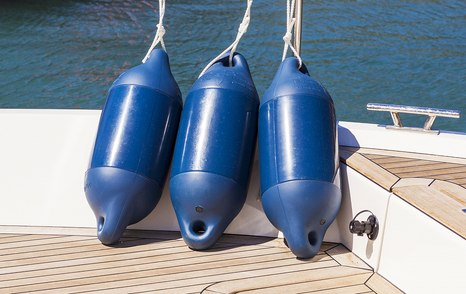
Navigation Lights
Are you sure that your navigation lights (nav lights) work? They can fill up with rainwater, the bulbs can fail and the lenses often get crazed and cracked with age.
It’s absolutely crucial to have reliable, highly visible navigation lights if there’s any chance you might be underway at night.
Be sure to check the stern light, side lights and masthead lights.

Deck cleats
It’s well worth giving each of your deck cleats a good tug and tightening up the bolts of any that are loose. They may be subjected to high shock loads at some point during your cruise.
It’s well worth giving each of your deck cleats a good tug and tightening up the bolts of any that are loose.
They may be subjected to high shock loads at some point during your cruise.
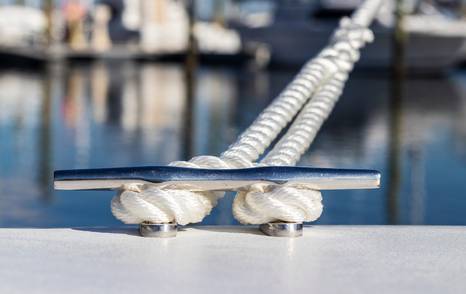
Anchoring gear
It’s also important to check your anchoring gear – particularly the swivel between the main anchor and its chain – and to ensure that the windlass is operating smoothly.
While you’re at it, haul the kedge anchor out of its locker and check that it’s ready to deploy.
The rope should be securely fastened at both ends (to the anchor and to the yacht) and neatly coiled so that it can run freely and doesn’t tangle and snag when you need to use it.

Safety equipment
Now’s the time to check your safety equipment. If the liferaft is due a service, get it done – and the same goes for lifejackets, although you can service them yourself.
Check that your pyrotechnic flares are in date and if not, get some new ones. Test your EPIRB and/or personal locator beacons (PLBs) and replace their batteries if required.
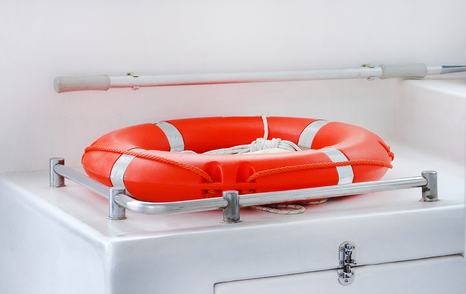
Tender
Don’t forget the tender. You’ll probably be relying on it at some point during the cruise, so make sure its engine is running smoothly and get a fresh supply of fuel.

On Deck, Checklist
- Make sure the windlass works, service it if required.
- Fenders, Pump up and get fender boards
- Docklines, inspect and replace (if necessary)
- Nav Lights, visual check and operation
- Deck Cleats, test and tighten (as necessary)
- Main Anchor, check swivel
- Kedge Anchor, check rope and readiness
- Liferaft, servicing due?
- Lifejackets, service (as necessary)
- Pyrotechnic Flares, are they in date?
- EPIRB & PLBs, test and replace batteries
- Tender, run engine and fresh fuel supply
Inside and down below
There’s less to do inside the yacht, assuming that everything’s in good order.
Galley
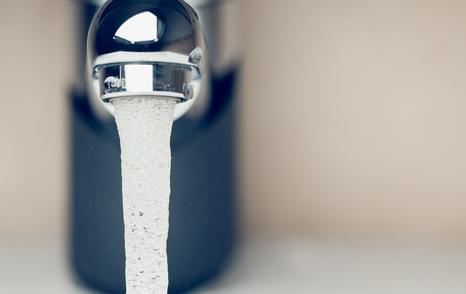
The most important thing to do is to check the fresh water supply – run the taps, top up the water tanks, drain and refill them if the water tastes brackish.
It's also worth getting some extra bottles or containers of drinking water in case you run out.
Don't forget to clean the fridge and defrost the freezer.
Store Cupboards
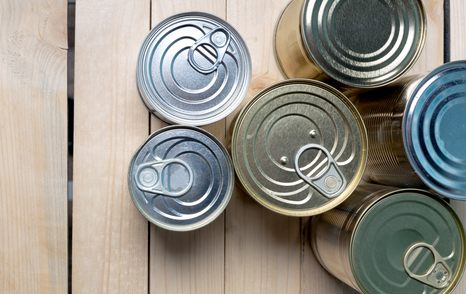
It’s also a good idea to make a provisioning plan, and ensure that you have some easy to prepare preserved or long-life foods for emergencies, such as when you arrive in a port with a hungry crew and find all the restaurants and shops shut.
When everyone’s onboard, make sure that all personal kit and provisions are properly stowed before you set off.
Onboard Checklist
- Make a provisioning plan
- Run the taps
- Top up the fresh water tank
- Rain and refill if it tastes bracksih
- Get iron rations and spare water container
- Stow all provisions and personal kit
Engine and Mechanical Systems
If the yacht hasn’t been used for several months or more, go on a short ‘shakedown cruise’ to identify potential problems before you set off on your extended holiday cruise – ideally a couple of weeks beforehand so that if you do find some gremlins, there’s time to get them fixed.
Make sure that you have the relevant user manuals for all of the yacht’s systems and equipment.
If you don’t want to carry paper copies of everything, you’ll probably be able to download PDF manuals from the manufacturers’ websites.
It’s wise to carry a full replacement set engine spares such as impellers, oil and fuel filters, replacement belts, a supply of engine oil and gearbox oil, and so on. If in doubt, ask your yacht dealer or marine engineer for advice.
It’s also worth carrying other spare parts so you (or a local boatyard mechanic) can service the generator, watermaker, heads and other systems.

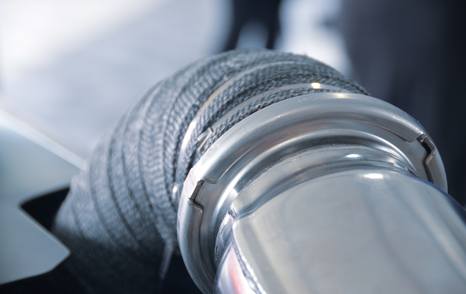
It’s a very good idea to have a maintenance log that covers all of the yacht’s technical systems and keep it up to date. If you’ve done this, you can consult it to quickly check whether any of the yacht’s key systems need servicing.
Check your inventory of spare parts and buy any that you might need.
Mechanical, Checklist
- Go on a shakedown cruise
- Check your spares inventory for the engine, generator, watermaker, heads, etc
- Make sure you have user manuals for all systems and equipment
- Get a jerrycan of spare fuel, plus engine and gearbox oil
- Consult your maintenance log – what needs servicing?
Navigation station and systems
Charts

In addition to all the normal pre-passage checks, make sure that you have digital and paper charts to cover the full extent of your cruise.
Some sets of digital charts have almost no overlap and the boundaries between them can catch you out. The same goes for your nautical almanac and pilot books.
VHF Radio
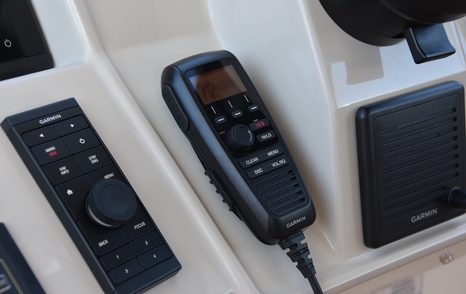
It’s also worth checking that your VHF radio has all the channels you’re likely to need. If not, get a marine electronics engineer to re-program your radio set.
For example, a VHF radio bought and fitted in the UK will probably need to be enabled for ATIS if you’re cruising the inland waterways of mainland Europe.
If it isn’t ATIS-enabled, you may not be able to communicate with lock keepers, bridge keepers and other vessels.
Navigation & Communications, Checklist
- Check you have adequate chart coverage – especially with digital charts
- Make sure your VHF radio has the right channels
- Check that your almanac and pilot books cover the full extent of your cruise
- Ensure that your radar and AIS are working properly
Paperwork and Sundries
Ships paperwork
This is very important if you’re cruising abroad. In addition to a full set of ship’s papers, listed below, make sure that your personal paperwork is in order and on board.

Courtesy flags
It’s also worth buying a set of courtesy flags for the countries you’re likely to visit.
In some countries it’s just polite to fly them; in others the local customs or border force are likely to harass you if they don’t see their flag flying from your yacht.

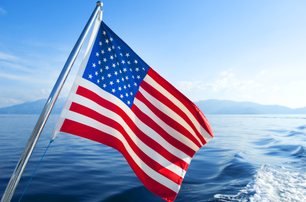

This is very important if you’re cruising abroad. In addition to a full set of ship’s papers, listed below, make sure that your personal paperwork is in order and on board.
Paperwork Checklist
- Proof of ownership (eg. bill of sale)
- Proof of tax status
- Yacht registration certificate
- Insurance certificate
- Skipper’s certificate of competence
- VHF radio operator’s licence
- Personal, Driving Licences
- Personal, Medical Documents (if applicable)
- Courtesy flags, for countries you’re planning to visit
Lift out
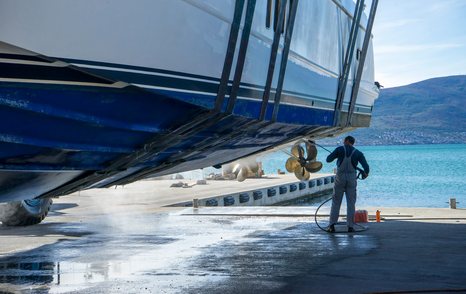

It’s often a good investment to get your yacht lifted out of the water before setting off on an extended cruise.
A clean hull bottom will go a lot faster and probably save you more than the cost of the lift-out in reduced fuel consumption.
Clean and polished propellers will also significantly boost performance and fuel economy.
While the yacht’s out of the water, take the opportunity to inspect trim tab and outdrive systems, check the anodes and replace them if they’re worn, and test prop shaft and rudder bearings by trying to jiggle them.
If there’s any play in them, get a marine engineer on the case.
You don’t want to set off on a long voyage with duff or dodgy bearings, for obvious reasons.
Yacht Lift Out Checklist
- Clean hull bottom, apply new bottom paint if needed
- Polish propellers
- Check anodes, replace if needed
- Test prop shaft bearings
- Check rudder bearings
- Renew stern gland packing if necessary
- Clear thrusters
- Inspect trim tab and outdrive systems

